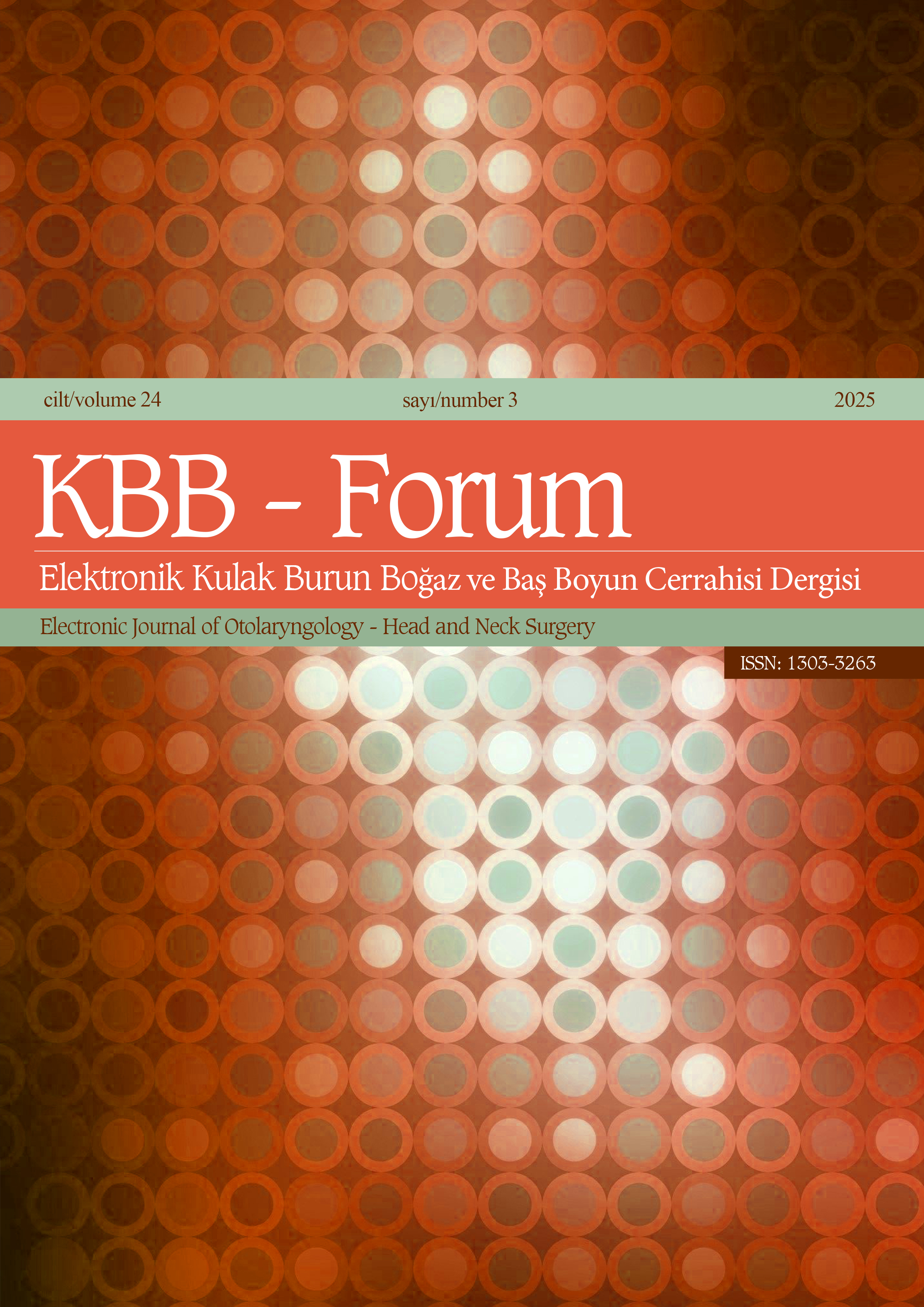DIAGNOSTIC IMPORTANCE OF THE RELATIONSHIP AMONG CALORIC TEST EVALUATION PARAMETERS IN PATIENTS WITH UNILATERAL VESTIBULAR WEAKNESS: A CASE-CONTROL STUDY
1İnönü Üniversitesi, Odyoloji, Malatya, Türkiye2Bingöl Üniversitesi, Odyoloji, Bingöl, Türkiye Background: To investigate the relationships among caloric test evaluation parameters in individuals with unilateral vestibular weakness.
Materials and Methods: The study included 28 individuals in the patient group and 28 individuals in the control group. A bithermal caloric test was administered to all participants using an air irrigator. The measured parameters included slow phase velocity, latency, time to reach the maximum slow phase velocity, and the difference between the time to reach the maximum slow phase velocity of the caloric nystagmus and the latency.
Results: In comparison with the healthy ears of the patient group, the pathological ears exhibited a significant decrease in slow phase velocity under both cold and warm stimuli, a prolonged latency, and a reduced difference between the time to reach maximum slow phase velocity and the latency period (p<0.05). Additionally, when compared with the control group, the pathological ears of the patient group demonstrated a significant reduction in slow phase velocity under cold and warm stimuli, as well as a shorter time to reach maximum slow phase velocity (p<0.05). Furthermore, the healthy ears of the patient group showed an increase in slow phase velocity under cold stimuli and a decrease in latency under both cold and warm stimuli when compared with the control group (p<0.05). Both positive and negative correlations were identified among the caloric test evaluation parameters.
Conclusions: In addition to the maximum slow phase velocity of caloric nystagmus, other evaluation parameters may also contribute to the diagnostic process. Moreover, the relationship between the velocity storage mechanism and the caloric test parameters, which assess the low-frequency VOR, is particularly noteworthy.
Keywords : Videonystagmography, caloric test, duration, slow phase rate, unilateral weakness, velocity storage mechanism



